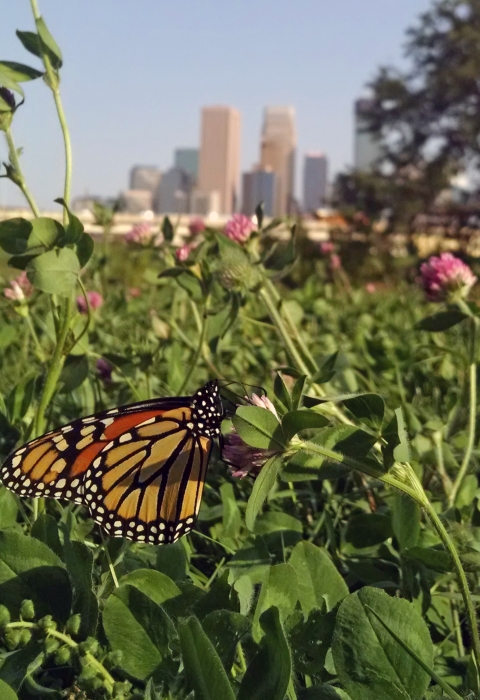Waking down a street in the Upper Albany neighborhood of Hartford, Connecticut, you may notice a change. Rows of bright green seedlings are taking shape, forming rows of cucumbers, zucchini, kale, and bell and hot peppers. With the support of a local horticulture nonprofit, KNOX, Inc., we at the U.S. Fish and Wildlife Service assisted the neighborhood with the transformation of a vacant lot into greenspace that invites pollinators and provides food for the community.
The nonprofit KNOX Inc. focuses on supporting the needs of Hartford’s citizens, communities, and businesses through horticulture and urban farming-based opportunities. KNOX Inc. oversees 21 community gardens throughout the city.
Our Partners for Fish and Wildlife Program and Silvio O. Conte National Wildlife Refuge staff made a home for butterflies, bees, birds, and other animals. The native plants will increase the number of pollinators in the plot, which in turn, will help increase the bounty of the fresh, locally grown produce. Planting a pollinator garden alongside vegetable gardens also brings people together, inspires conversations about the roles of pollinators in food, and strengthens the connection between people and nature.
Giving people an opportunity to learn more about where their food comes from and how it is grown provides a personal and meaningful relationship with nature. Another group bringing this lot to life are Prince Technical High School students. The school focuses on landscaping and agriculture practices by planting and maintaining the community garden.
"With the firsthand observations of plant growth, bloom timing, bug interactions, and soil health, we are able to further the students ’and residents 'understanding of how pollinators have a significant impact on the world that surrounds them, even in a developed urban environment,” said David Sagan, U.S. Fish and Wildlife Service refuge operations specialist.
Working side by side with students and community members clearing brush and planting the gardens, refuge staff spoke about the declines in pollinator populations, the important connections between pollinators and plants, and their dependence on each other to complete life cycles.
David stated that watching the understanding of students and the community develop as they uncover an earthworm or take selfies with a garter snake is rewarding. These small expressions of nature can inspire a lifelong interest.





